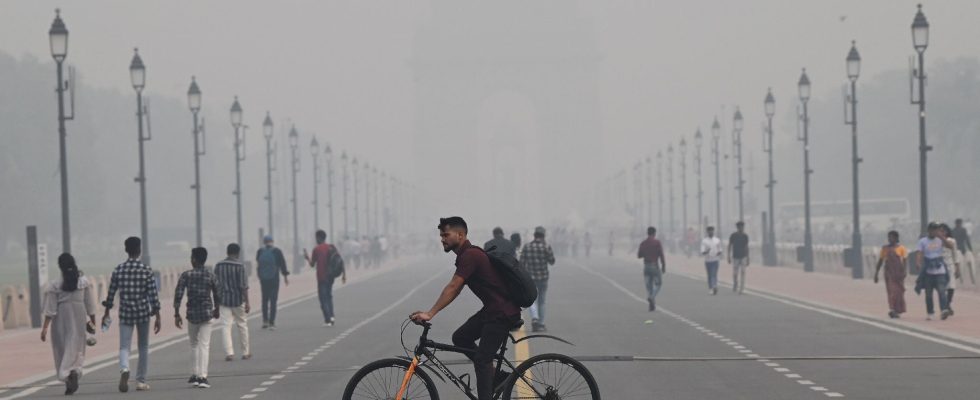Should we remove particles from the atmosphere or, on the contrary, inject them, in order to save the planet? Arbitration may seem strange and totally premature. However, we will probably be confronted with it, estimates the American climatologist James Hansen who was one of the first to alert us to the impact of human activities on the climate at the end of the 1980s.
For more than thirty years, this much-loved scientist has continued his watchdog role. And in his latest research work, it sums up the contradiction we face. On the one hand, aerosol pollution has been decreasing since 2010 thanks in particular to the efforts of maritime transport, which emits fewer sulfur particles. Very good news which will save many lives. Unfortunately, this cleaning of the atmosphere also makes us more sensitive to warming because the pollution acts as a cooling layer!
For James Hansen, this protective effect is far from negligible. Thus, according to his calculations, its weakening could accentuate the climate crisis. The rate of global warming which was 0.18°C per decade between 1970 and 2010 could now increase to 0.27°C. With concrete consequences: the threshold of 1.5°C would be exceeded this decade and the 2°C mark would be reached before 2050. Not really what was planned in the Paris Agreement.
Certainly, this idea of accelerating warming is not unanimous among researchers. Many observers also believe that the objective of maintaining warming at 2°C can still be achieved, even if the firing window is reduced. However, “reducing our greenhouse gas emissions will not be enough” to solve our climate problem, warns the expert. A boost from technology will be needed. The capture and storage of CO2 is already developing in addition to reducing the carbon footprint, whereas a few years ago, this type of solution was part of the controversial arsenal of geoengineering. In France, several manufacturers plan to send their CO2 to the bottom of the North Sea, taking advantage of the facilities and services put in place by Scandinavian countries.
James Hansen, however, invites us to look closely at a broader spectrum of options: carbon tax at national level and at borders, nuclear development and even solar radiation management (SRM), which involves injecting particles – non-polluting this time – in the atmosphere using boats or planes to return part of the sun’s rays to space. “This technique raises – rightly – a lot of reluctance,” says James Hansen. In November 2022, several experts spoke to L’Express about the risks posed by this type of technology: certain regions would surely benefit from pleasant cooling. Others, conversely, could see the yield of their crops deteriorate.
Furthermore, the existence of such a tool would undermine efforts to reduce our greenhouse gas emissions. Finally, even if a form of cooperation emerged, mastery of this technology would represent such a challenge for States that it would be difficult to maintain a fair decision-making process. In other words, one country would probably end up taking over the global thermostat.
But that doesn’t stop SRM from gaining support, at least to study it closely. A direct consequence of our inertia regarding climate policies. As James Hansen points out, given our slow progress in reducing CO2 emissions, we must undoubtedly prepare for difficult trade-offs.
